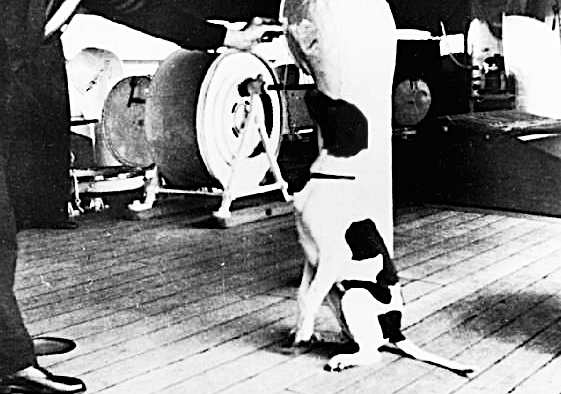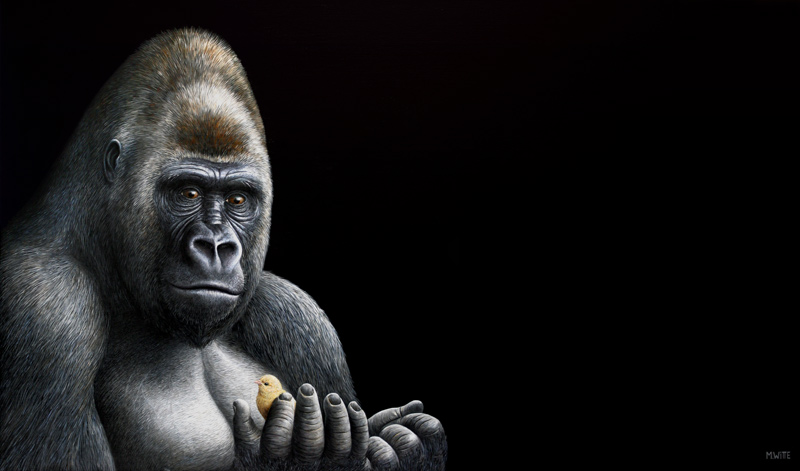
One day Stan Laurel visited a stationery store.
The clerk seemed to recognize him.
“Say,” he said. “Aren’t you –”
Laurel said, “Oliver Hardy.”
“Right,” said the clerk. “Say, whatever happened to Laurel?”
Laurel said, “He went balmy.”

One day Stan Laurel visited a stationery store.
The clerk seemed to recognize him.
“Say,” he said. “Aren’t you –”
Laurel said, “Oliver Hardy.”
“Right,” said the clerk. “Say, whatever happened to Laurel?”
Laurel said, “He went balmy.”
A pleasing observation by W.V. Quine from 1988:
Fermat’s Last Theorem can be vividly stated in terms of sorting objects into a row of bins, some of which are red, some blue, and the rest unpainted. The theorem amounts to saying that when there are more than two objects, the following statement is never true:
Statement. The number of ways of sorting them that shun both colors is equal to the number of ways that shun neither.
He explains this, very concisely, here.
(W.V. Quine, “Fermat’s Last Theorem in Combinatorial Form,” American Mathematical Monthly 95:7 [September 1988], 636.)
We Fada wa dey een heaben,
leh ebreybody hona ya name.
We pray dat soon ya gwine
rule oba de wol.
Wasoneba ting ya wahn,
leh um be so een dis wol
same like dey een heaben.
Gii we de food wa we need
dis day yah en ebry day.
Fagib we fa we sin,
same like we da fagib
dem people wa do bad ta we.
Leh we dohn hab haad test
wen Satan try we.
Keep we fom ebil.
From the New Testament in Gullah. The whole book is here.

In 1944, British captives of the Japanese in Sumatra drew morale from an unlikely source: a purebred English pointer who cheered the men, challenged the guards, and served as a model of patient fortitude. In this week’s episode of the Futility Closet podcast we’ll tell the story of Judy, the canine POW of World War II.
We’ll also consider the frequency of different birthdays and puzzle over a little sun.
In 2014, Australian TV presenter Karl Stefanovic wore the same blue suit every morning for a year on Channel Nine’s Today program. Not a single viewer asked about it.
In the same period viewers sent regular criticisms of co-host Lisa Wilkinson’s wardrobe. “Who the heck is Lisa’s stylist?” one wrote. “Today’s outfit is particularly jarring and awful. Get some style.”
“I’m judged on my interviews, my appalling sense of humour — on how I do my job, basically,” Stefanovic told the Sydney Morning Herald. “Whereas women are quite often judged on what they’re wearing or how their hair is. … Women are judged much more harshly and keenly for what they do, what they say and what they wear.”
(Thanks, Rini.)
Around 1220, Oxford University proposed this form letter for young scholars seeking money from their patrons:
To his venerable master A., greeting. This is to inform you that I am studying at Oxford with great diligence, but the matter of money stands greatly in the way of my promotion, as it is now two months since I spent the last of what you sent me. The city is expensive and makes many demands. I have to rent lodgings, buy necessaries, and provide for many other things which I cannot now specify. Wherefore I respectfully beg your paternity that by the promptings of divine pity you may assist me, so that I may be able to complete what I have well begun.
One father wrote, “A student’s first song is a demand for money, and there will never be a letter which does not ask for cash.”
(From Charles H. Haskins, The Life of Medieval Students as Illustrated by Their Letters, 1898.) (Thanks, Paul.)

New Zealand woodworker Henk Verhoeff makes whimsically broken furniture.
“It’s hard to say how long each piece takes me,” he says. “It’s unset times during the week, and it could easily be 80 to 100 hours.”
“I started creating them for the pure love of it, without the intention of selling them. But when I run out of space, there will be an eBay auction or two. Everything is for sale … except for my wife.”
His daughter posts photos on Facebook.
In 1986 the Los Angeles Times received a peculiar 167-page novel from Lawrence Levine of St. Augustine, Fla. Titled Dr. Awkward & Olson in Oslo, it began “Tacit, I hate gas (aroma of evil), masonry …” It ended “No, Sam — live foam or a sage Tahiti CAT!” And the very middle read “I deplore media, rats, gals, a tar bag and a maniac Dr. Awkward ‘Cain,’ a mad nag, a brat, a slag star. Ai! Demerol, pedicular addenda, Edgar!”
Working four hours a day for five months, Levine had composed a novel that was one long palindrome, 31,594 words.
“There were lessons in trial and error, in logic, in vocabulary, in syntactics, and a wide-ranging lexical development that I never thought possible,” Levine revealed elsewhere. “I wrote the novel because to my knowledge no other person had ever composed an equal nonesuch. I decided, as it were, to be the first.”
The Times responded, “The world needs more Levines — playful eccentrics determined to scale the heights where no one has gone before, even if getting there isn’t much of an accomplishment. Or, as the metaphysicians say, ‘No lemons, no melon.'”

“The more you learn about the dignity of the gorilla, the more you want to avoid people.” — Dian Fossey